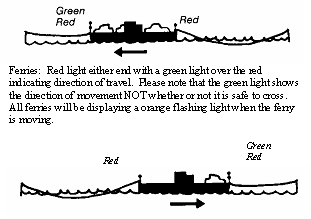Rules of the River
The Hawkesbury River is tidal from Windsor down with varying degrees of flow - depending on recent rains. Combinations of wind and tide can cause waves in all parts of the river. Hence spray skirts are recommended.
River width is variable, but noticeably widens after Checkpoint “H”. Large open expanses of water occur near Checkpoint “O” and at several locations downstream with the widest occurring on the last leg to the finish.
We strongly recommend that you drive and paddle the course in daylight hours as part of your race preparation. The most common points of confusion are the MacDonald River and Berowra Waters junctions. Remember, turn hard right at Wisemans Ferry and hard left at Bar Point (Checkpoint “Q”).
Familiarisation paddles may be available and are an excellent way to get to know the river and to talk to other paddlers.
Navigational lights
CAUTION: As paddlers approach both Spencer and Bar Point, a white flashing navigation light (cardinal marker) may be confused with checkpoint lights. These are indicated on paddler’s maps.
From Checkpoint H downstream, red and green navigation lights can be very helpful in choosing the correct paddling course. Remember, as you paddle downstream, the channel is on the left of the red channel markers and the right of the green markers.
Ferry cables
BEWARE: There are four car ferry cables to be crossed by competitors in the Hawkesbury Canoe Classic - Sackville, Lower Portland, Webbs Creek and Wisemans Ferry. Transport for New South Wales (Maritime) has placed the following restrictions on craft crossing ferry cables as part of the event’s Aquatic Licence:
-
No craft will cross ferry cables while the ferry is underway.
-
Ferry cables will only be crossed midstream, in the marked channel and ONLY when the orange flashing light on the ferry is extinguished..
To help paddlers comply with these instructions there will be small floats with a blue strobe flashing light placed so that they form a gate about 50 metres upstream of each car ferry.
Competitors must pass through these gates and remain midstream until the ferry cables are passed. Each car ferry will have an orange flashing light mounted on it. This light will be turned on whenever the vessel is moving. No competitor may pass through the channel or cross ferry cables while the ferry’s light is flashing. SES vessels will be stationed at each ferry to guide paddlers through the gates. Failure to comply with these instructions will result in disqualification from the event and may jeopardise the entire event for coming years.

Narrow channels
Paddlers must obey the NSW Maritime Authorities ruling regarding narrow channels. Always keep to the right hand or starboard side of a channel when proceeding through and do not impede the passage of other vessels using the channel.
Checking in/out
It is the responsibility of all competitors to ensure that their craft number is recorded at every checkpoint station indicated by a special orange flashing light. If the station is on board a vessel, it may also be marked by a string of cyalumes.
Stations will be positioned in the best spot for the safety network. Note that there may be two stations at major checkpoints (IN and OUT) or they may be away from the beach access point.
Look for the light and give your number. It is in your best interests, so we know where you are.
Paddlers failing to check IN or OUT at Checkpoint I will have a fifteen minute time penalty added to their overall time.
Land checkpoints: All craft must pass between the floating buoys and the river bank.
Boat checkpoints: All craft must pass within 10 metres of the checkpoint vessel.
Checkpoint O: Is a boat checkpoint - there is no longer a land option available.
Finish: All craft must pass the end of the pontoon.
Overtaking
The leading craft has the right of way at all times. The onus is on any overtaking craft to do so with safety.
As the river is generally very wide, do not cut in close to the slower craft. Give them plenty of room. Remember, a slower craft is generally more difficult to steer and control and is likely to be crewed by a relatively inexperienced paddler.
Equal times
If the group you are paddling with wish to record the same time, indicate this at Finish or on reaching shore.
